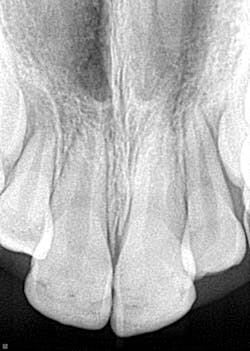Diamonds may last forever, but those fillings won’t
“Really? This filling/crown won’t last forever?”
I am asked this question on a daily basis, to which I respond like a broken record that it all depends on several factors, including, but not limited to, home care, eating habits, oral conditions such as dry mouth, function, size of filling, reason for restoration, etc.
Why is it that patients think their restorative work will last forever? Perhaps it’s residual from the old classic James Bond movie, “Diamonds Are Forever,” or the commercials that lure in customers with promises of everlasting love with a purchase of diamonds that will also last forever. Despite our disclaimers, when dental work does need replacing or fixing, eyebrows get raised and fingers get pointed in our direction. Am I wrong?
Well, three months later, mom calls stating that the “bonding chipped” and needed fixing. When we asked what happened, our young patient readily told us that she bit into “a big apple” and the filling chipped/broke off. Being 10, it’s not uncommon to forget the do’s and don’ts when living your day-to-day life. I get it; I totally do. So, without further ado, we fixed her up and charged out another resin, while reinforcing the limitations.
Mom was irate! She claimed that it hadn’t lasted long because of “provider error and poor placement of the original filling”—not because her daughter had bitten into an apple with her compromised teeth.
Why is it always the dentist’s fault? Why do patients think we are out to milk them of their time and hard-earned money by purposefully doing poor work, just so we can charge out our services again and again? The irony behind it all is when patients leave our offices, we have absolutely no control over what they do or don’t do. Quite often, our advice and recommendations aren’t heeded. Furthermore, there are limitations to the functional capacities of the dental materials that we use. The laws of physics and biosciences are what they are!
The question that begs answering is this: Is there something wrong in being compensated for providing a service that is a specialized medicine, even if it has to be done again due to no fault of our own? I have had my fair share of “I just pulled it out with my own pliers” stories, but 99.9% of people truly want a qualified, licensed doctor to take care of their oral health-care needs. It is an investment into their self-wellness, and we have an integral role in that overall equation.
Now, to play devil’s advocate, there definitely is room for the argument that some dental work really isn’t all that great. In fact, it’s shady. In these situations, we need to act professionally without throwing our colleagues under the bus and take the situation for what it is.
So, while diamonds really do last forever, fillings and other restorative work don’t. I wish we could wave a magic wand and make it different, but the fact of the matter is that the body is an ever-changing entity that demands constant adaptation and understanding over the course of life. This isn’t a bad thing; it’s just the way it is. And until that concept is understood, it will always, to some degree, be “our fault” in the eyes of some of our patients.
Never a dull moment, right?!
Here’s to the variety and challenges of the profession that always keeps it real and exciting!
Cheers, my friends!
Stacey
Stacey L. Gividen, DDS
Editorial Director, Breakthrough Clinical
LAST MONTH >> 12 years in temps ... placed on implants
Read more clinical dentistry articles at this link.
Editor's note: This article originally appeared in Breakthrough Clinical, a clinical specialties newsletter from Dental Economics and DentistryIQ.









